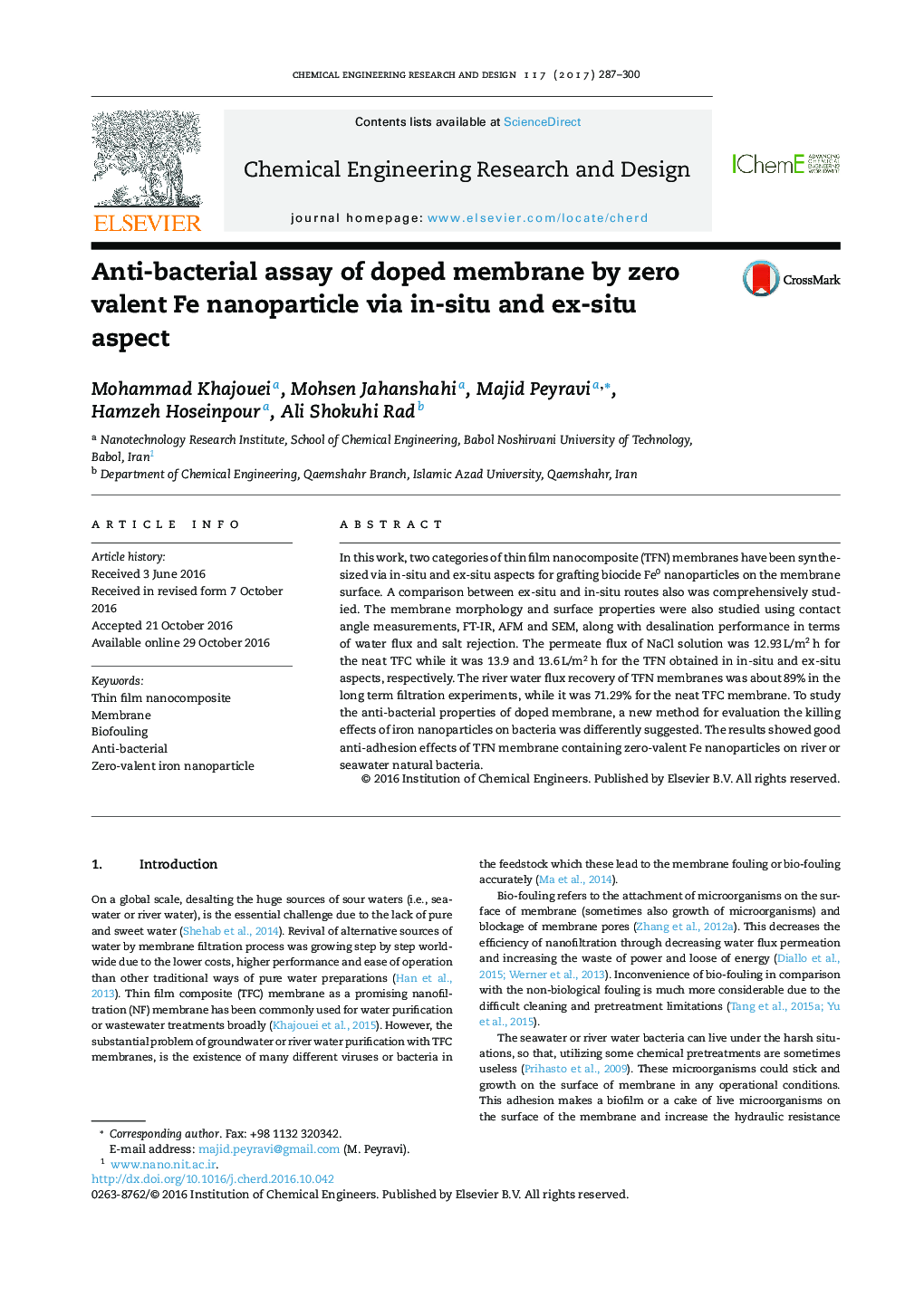| Article ID | Journal | Published Year | Pages | File Type |
|---|---|---|---|---|
| 4987352 | Chemical Engineering Research and Design | 2017 | 14 Pages |
â¢In-situ fabrication of Fe0-TFN membrane using FeCl3 metal salt and NaBH4.â¢A comparison of membranes fabricated by in-situ and ex-situ aspects was presented.â¢Quantitative and qualitative antibacterial analyses of surface imaging were studied.â¢A new method of evaluation for killing effects of iron nanoparticles was suggested.
In this work, two categories of thin film nanocomposite (TFN) membranes have been synthesized via in-situ and ex-situ aspects for grafting biocide Fe0 nanoparticles on the membrane surface. A comparison between ex-situ and in-situ routes also was comprehensively studied. The membrane morphology and surface properties were also studied using contact angle measurements, FT-IR, AFM and SEM, along with desalination performance in terms of water flux and salt rejection. The permeate flux of NaCl solution was 12.93Â L/m2Â h for the neat TFC while it was 13.9 and 13.6Â L/m2Â h for the TFN obtained in in-situ and ex-situ aspects, respectively. The river water flux recovery of TFN membranes was about 89% in the long term filtration experiments, while it was 71.29% for the neat TFC membrane. To study the anti-bacterial properties of doped membrane, a new method for evaluation the killing effects of iron nanoparticles on bacteria was differently suggested. The results showed good anti-adhesion effects of TFN membrane containing zero-valent Fe nanoparticles on river or seawater natural bacteria.
